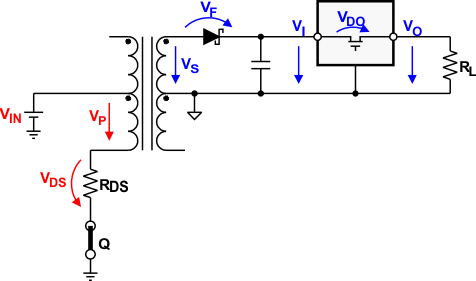SLLSFW9A April 2024 – July 2024 ISO7741TA-Q1 , ISO7741TB-Q1
PRODUCTION DATA
- 1
- 1 Features
- 2 Applications
- 3 Description
- 4 Pin Configuration and Functions
-
5 Specifications
- 5.1 Absolute Maximum Ratings
- 5.2 ESD Ratings
- 5.3 Recommended Operating Conditions
- 5.4 Thermal Information
- 5.5 Power Ratings
- 5.6 Insulation Specifications
- 5.7 Safety-Related Certifications
- 5.8 Safety Limiting Values
- 5.9 Electrical Characteristics Transformer
- 5.10 Electrical Characteristics—5V Supply
- 5.11 Supply Current Characteristics—5V Supply
- 5.12 Electrical Characteristics—3.3V Supply
- 5.13 Supply Current Characteristics—3.3V Supply
- 5.14 Electrical Characteristics—2.5V Supply
- 5.15 Supply Current Characteristics—2.5V Supply
- 5.16 Switching Characteristics—5V Supply
- 5.17 Switching Characteristics—3.3V Supply
- 5.18 Switching Characteristics—2.5V Supply
- 5.19 Insulation Characteristics Curves
- 5.20 Typical Characteristics
- 6 Parameter Measurement Information
- 7 Detailed Description
- 8 Application and Implementation
- 9 Device and Documentation Support
- 10Revision History
- 11Mechanical, Packaging, and Orderable Information
8.2.2.5.2 Turns Ratio Estimate
Assuming that the rectifier diodes and linear regulator are selected and that the transformer selected must have a V-t product of at least 11Vμs. However, before searching the manufacturer web sites for a suitable transformer, the user still needs to know the minimum turns ratio that allows the push-pull converter to operate flawlessly over the specified current and temperature range. This minimum transformation ratio is expressed through the ratio of minimum secondary to minimum primary voltage multiplied by a correction factor that takes the transformer typical efficiency of 97% into account:
VS-min must be large enough to allow for a maximum voltage drop, VF-max, across the rectifier diode and still provide sufficient input voltage for the regulator to remain in regulation. From the LDO Selection section, this minimum input voltage is known and by adding VF-max gives the minimum secondary voltage with:
 Figure 8-4 Establishing the Required Minimum Turns Ratio Through Nmin = 1.031 × VS-min / VP-min
Figure 8-4 Establishing the Required Minimum Turns Ratio Through Nmin = 1.031 × VS-min / VP-minThen calculating the available minimum primary voltage, VP-min, involves subtracting the maximum possible drain-source voltage of the device, VDS-max, from the minimum converter input voltage VIN-min:
VDS-max however, is the product of the maximum RDS(on) and ID values for a given supply specified in the data sheet:
Then inserting Equation 7 into Equation 6 yields:
and inserting Equation 8 and Equation 5 into Equation 4 provides the minimum turns ration with:

Example:
For a 3.3VIN to 5VOUT
converter using the rectifier diode MBR0520L and the 5V LDO, the data sheet values
taken for a load current of 600mA and a maximum temperature of 85°C are
VF-max = 0.2V,
VDO-max =
0.5V, and VO-max = 5.1V.
Then assuming that the converter input voltage is taken from a 3.3V controller supply with a maximum ±2% accuracy makes VIN-min = 3.234V. Finally the maximum values for drain-source resistance and drain current at 3.3V are taken from the data sheet with RDS-max = 0.45Ω and ID-max = 700mA.
Inserting the values above into Equation 10 yields a minimum turns ratio of:
Most commercially available transformers for 3V to 5V push-pull converters offer turns ratios between 2.0 and 2.3 with a common tolerance of ±3%.